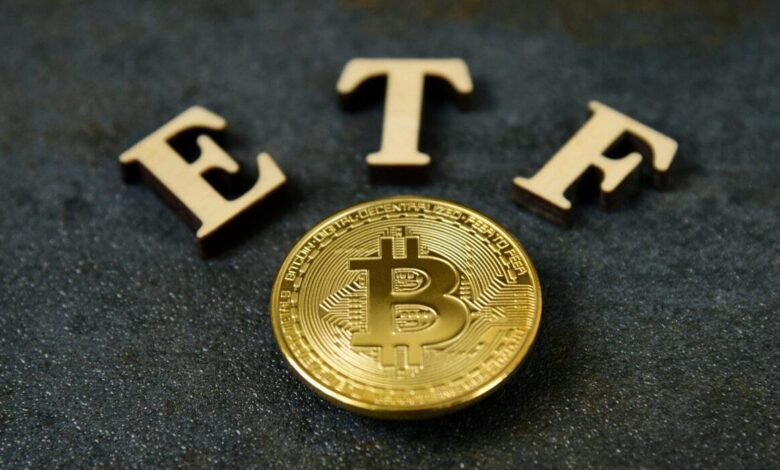
Bitcoin ETFs Surpass $40 Billion in Growth and Investment Insights
With their combined inflows exceeding $40 billion, Bitcoin exchange-traded funds have attracted notable attention recently. This moment represents a turning point in the development of cryptocurrencies and their growing general acceptance. Bitcoin ETFs provide investors with regulated and simple Bitcoin exposure without the hassle of holding or managing the cryptocurrency. This article will analyze Bitcoin, its growth, and what the $40 billion flood means for Bitcoin and the financial world.
Bitcoin ETF Investment Overview
Tracking the price of Bitcoin, a Bitcoin ETF lets investors expose themselves to the cryptocurrency without having to acquire and keep it themselves. The ETF owns Bitcoin futures contracts—or occasionally actual Bitcoin—instead of actual Bitcoin itself. Like with stocks or other financial instruments, investors might buy ETF shares on conventional stock markets. Particularly for individuals who want to bypass the complexity of crypto wallets and exchanges, this structure offers investors a safer and more easily accessible approach to entering the world of Bitcoin.

Over the years, Bitcoin ETFS have attracted notable popularity, especially in nations like the United States, Canada, and Brazil with developed financial markets. The U.S. Securities and Exchange Commission (SEC)’s approval of Bitcoin futures-based ETFs in 2021 signalled a sea change and provided institutional investors with a means into the Bitcoin market. The total inflows into Bitcoin ETFs have surged since then, exceeding the $40 billion mark.
The Growth of Bitcoin ETFs
Several essential elements have facilitated the fast expansion of Bitcoin ETFs, resulting in the impressive $40 billion cumulative inflows.
Institutional Demand Growth
Institutional demand is one of the main forces fueling the expansion of Bitcoin ETFs. For some years, big financial firms, including Fidelity, JPMorgan, and Greyscale, have been funding Bitcoin. These companies have acknowledged Bitcoin as a legitimate asset class, and the desire for controlled, simple-to-trade products has driven investment in Bitcoin ETFs.
Bitcoin ETFs provide institutional investors with the advantages of Bitcoin exposure, free from the complexities of direct ownership. Many institutions know the conventional ETF structure, facilitating their Bitcoin integration into their portfolios. Bitcoin ETFs’ transparency and regulatory control provide even more attraction, particularly for institutional investors constrained by rigorous regulations, particularly for institutional investors constrained by rigorous regulations.
Bitcoin ETFs Growth
The emergence of Bitcoin ETFs has also been much aided by regulatory clarity. Since Bitcoin was first introduced, it has been mainly unregulated, which has caused significant ambiguity for potential investors. Governments and authorities have, however, made progress recently in precisely addressing how cryptocurrencies—including Bitcoin—should be handled. This is especially relevant in the United States, where the late 2021 SEC approval of Bitcoin futures-based ETFs.
The approval of these goods marked a change in the government’s view of Bitcoin. Consequently, investors looking to access the bitcoin market in a controlled setting find increasing appeal in Bitcoin ETFs. This regulatory clarity has helped institutional and individual investors flood Bitcoin, enabling their total inflows to surpass $40 billion.
Bitcoin ETF Demand
Bitcoin’s growing reputation as a store of value has also driven the demand for Bitcoin ETFs. In a world of economic uncertainty, inflation, and low-interest rates, many investors turn to Bitcoin as a hedge against traditional market risks. Often referred to as “digital gold,” Bitcoin has become an increasingly attractive asset for diversifying their portfolios and protecting their wealth.
This growing interest in Bitcoin as a store of value has translated into increased demand for Bitcoin. By investing in these ETFs, investors can gain exposure to Bitcoin’s potential as a store of value without the risks associated with directly purchasing and holding the cryptocurrency.
Bitcoin ETF Accessibility
Another key factor driving the growth of Bitcoin ETFs is the increased accessibility for retail investors. Traditionally, investing in Bitcoin required navigating cryptocurrency exchanges, securing wallets, and managing private keys. For many individuals, this was a barrier to entry.
Bitcoin eliminates many of these challenges by providing a familiar investment vehicle—stocks—on traditional exchanges. Retail investors can now easily purchase Bitcoin through their brokerage accounts, making it much easier to gain exposure to Bitcoin. This accessibility has contributed to a broader demographic of investors entering the Bitcoin market.
Bitcoin ETF Growth
Substantial expansion, growing institutional interest, and changing market dynamics define Bitcoin’s future direction. Notably, the U.S. spot Bitcoin ETFs introduced in January 2024 have been relatively successful, taking in around $3.5 billion in net inflows by April 2025 and attracting over $100 billion in assets under management. This has made them among the most successful introductions in recent years. By 2025, Bitcoin inflows are predicted to spike by 50%, maybe taking total assets to over $200 billion by year-end.
Final thoughts
A noteworthy turning point in the Bitcoin market is the $40 billion cumulative inflows. Growing institutional use, legal certainty, and Bitcoin’s rising value have made Bitcoin ETFs a vital tool for those seeking exposure to the Bitcoin market.
Bitcoin will likely become increasingly important in the worldwide financial ecosystem as Bitcoin develops. Since they offer a link between conventional finance and the realm of digital assets.








